
8 Bill McCrea: ‘When we were detailed on the first Hamburg raid we thought, “Now we’ll see what it’s really like!”

9 Doug Fry (centre), hours before he was shot down at the end of July 1943.

10 Baptism of fire: Ted Groom and pilot Reg Wellham’s first operation was the firestorm raid of27 July.

11 Hamburg before the war. Narrow streets like this allowed fires to spread rapidly.

12 The bright lights of the Reeperbahn in the 1930s. Scenes like this were impossible during the black-out.

13 The heart and soul of Hamburg: the docks and shipyards were the main reason the city was such an important target.

14 False streets and buildings were floated on the Alster lake in an attempt to disguise the city centre. This camouflage caught fire during the bombardmetn, adding to the inferno.

15 Secret weapon: a factory worker cuts strips of ‘Window’ to the right length.

16 RAF ground crew prepare bombs before loading them into a Stirling bomber.

17 Hamburg from the air on the night of 24 July. The centre of the picture shows the Neustadt on fire, with bombs spreading back towards Altona at the bottom.

18 Streaks of flak over Hamburg. Without radar to guide them, flak gunners were forced to fire blindly into the sky.

19 A typical formation of B-17 Flying Fortresses, with German fighter aircraft above.

20 The lead crew of the USAAF’s 303rd Bomb Group before their mission to Hamburg on 25 July. The pilot, Major K. R. Mitchell, is second from left at the back.
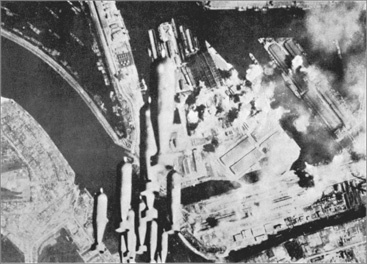
22 Hamburg women and children run for cover during an air-raid warning.
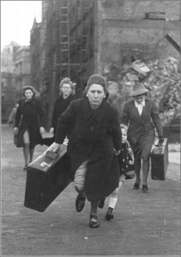
21 American bombs fall on Howaldtswerke shipyards, 26 July.
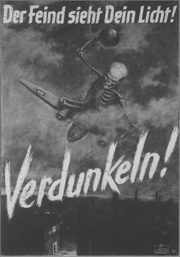
23 German propaganda poster, 1943:‘The enemy sees your light. Black out!’

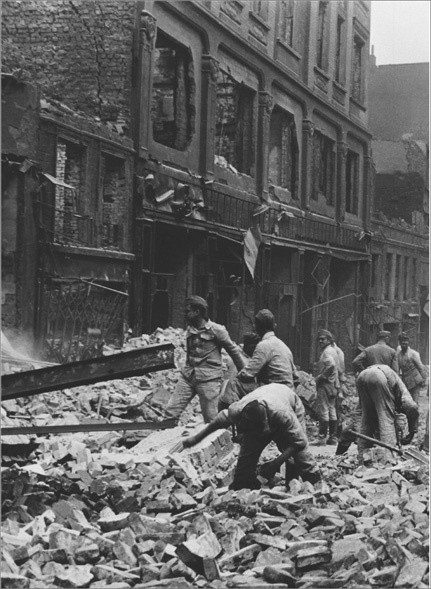
24 The ‘Michel’, a symbol of Hamburg. The sight of this spire rising unscathed in the ruins of the city was as important to Hamburgers as the urvival of St Paul’s Cathedral was to Londoners during the Blitz.
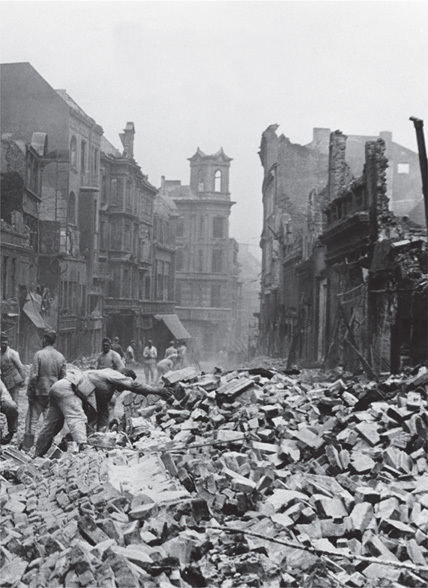
25 A group of men clears the rubble on Grosse Bergstrasse in Altona, shortly after the opening raids.

26 Elbstrasse (now Neanderstrasse) before the raids.

27 Elbstrasse after the raids.
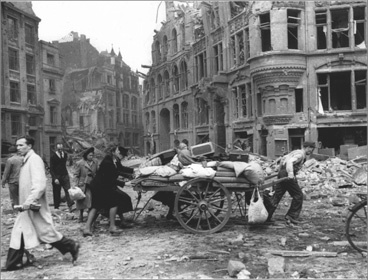
28 and 29 Even before the evacuation order was given, the Ausgebombtenbegan toflee the city. Above: A family rescues a few of its possessions. Below: Refugees being evacuated on open lorries.
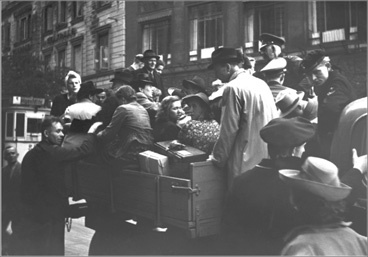
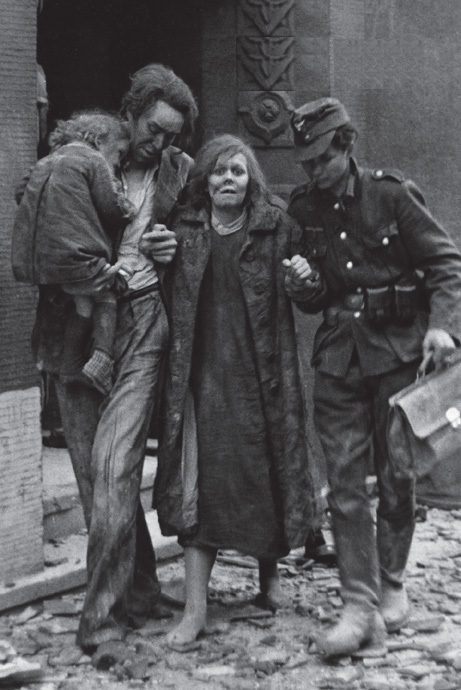
30 The face of the victim: the trauma of being bombed scarred an entire generation of Germans.
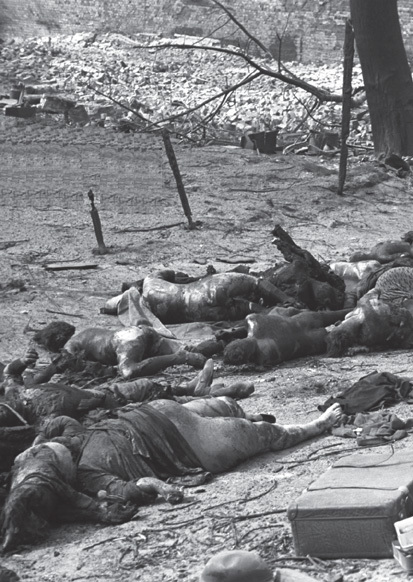
31 Some of the city’s 45,000 dead litter a street in the suburb of Hamm.
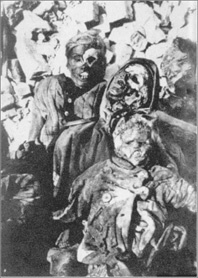
32 According to the late W. G. Sebald, in the immediate post-war years shopkeepers would pull photographs like this from under the counter with a furtiveness usually reserved for pornography. These unfortunates were not burned but baked in the heat of their shelter.
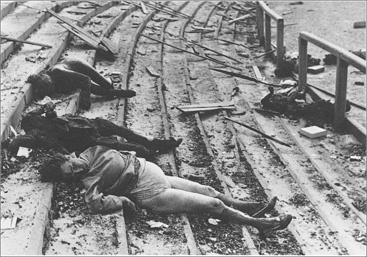
33 The changeful nature of the firestorm produced some gruesome contrasts: this body of a pregnant woman could almost be sleeping, while the corpses behind her are charred and mumified beyond recognition.
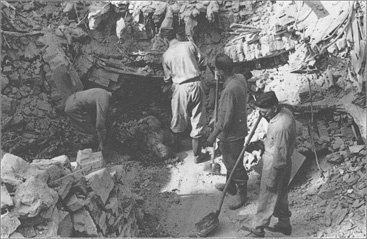
34 The clean-up operation: Hamburg workers clear the entrance to a buried air-raid shelter.
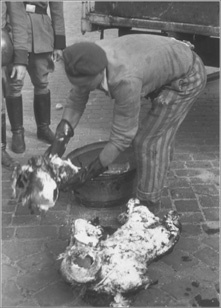
35 A prisoner from Neuengamme concentration camp loads charred body parts into a bucket.

36 Survivors being issued with emergency rations at one of the refugee assembly points.
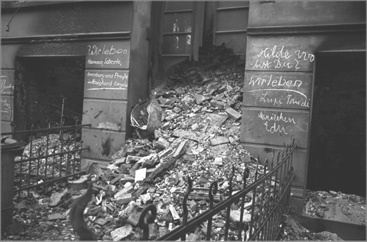
37 Chalk messages appeared on many of the ruins, listing the where abouts of those who used to live there. Some of them seem like gestures of defiance: Wir leben(‘We are alive’).
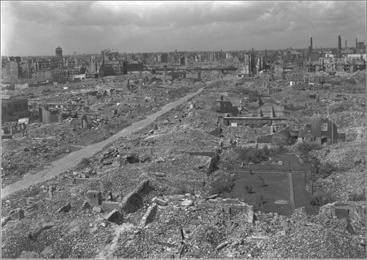
38 Ruined landscape. After the Gomorrah attacks Volksdorfer Strasse in Barmbek was merely a pathway cleared through the rubble.
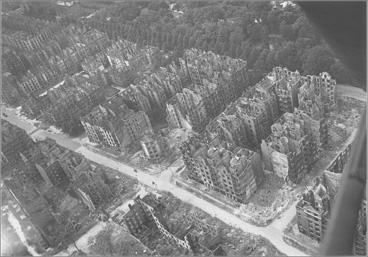
39 In Hamm only the façades of buildings still stand: everything else has been turned to ash.
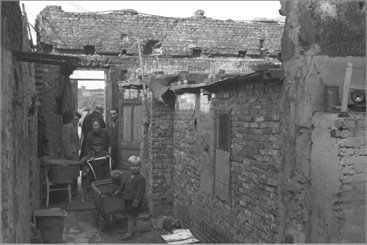
40 Life amongst the ruins: for the rest of the war, and for years afterwards, families were forced to live in the most basic of conditions wherever they could find shelter.
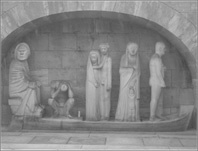
41 The memorial to the dead at Ohlsdorf depicts Charon ferrying the dead across the Styx. It stands in the centre of four mass-graves (below), where 36,918 bodies are buried. Thousands more were never recovered.
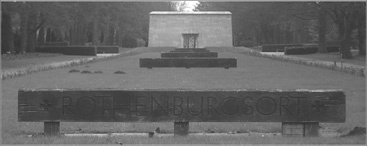
Appendix A
Chronology of Hamburg
Year
Date
Events and description
808
Charlemagne begins building a fortress called Hammaburg at the point where Alster meets the Elbe.
831
Franconian emperor Ludwig the Pious sends Benedictine monk Ansgar to pitch tents on Elbe and appoints him bishop.
845
Viking marauders reduce Hammaburg to rubble.
9th–13th C
Reign of Schauenburg counts allows city to flourish and expand to south of the Elbe.
1186–7
Adolf III von Schauenburg parcels out wasteland to west of old town, and a mercantile settlement and harbour are constructed. This becomes Neustadt.